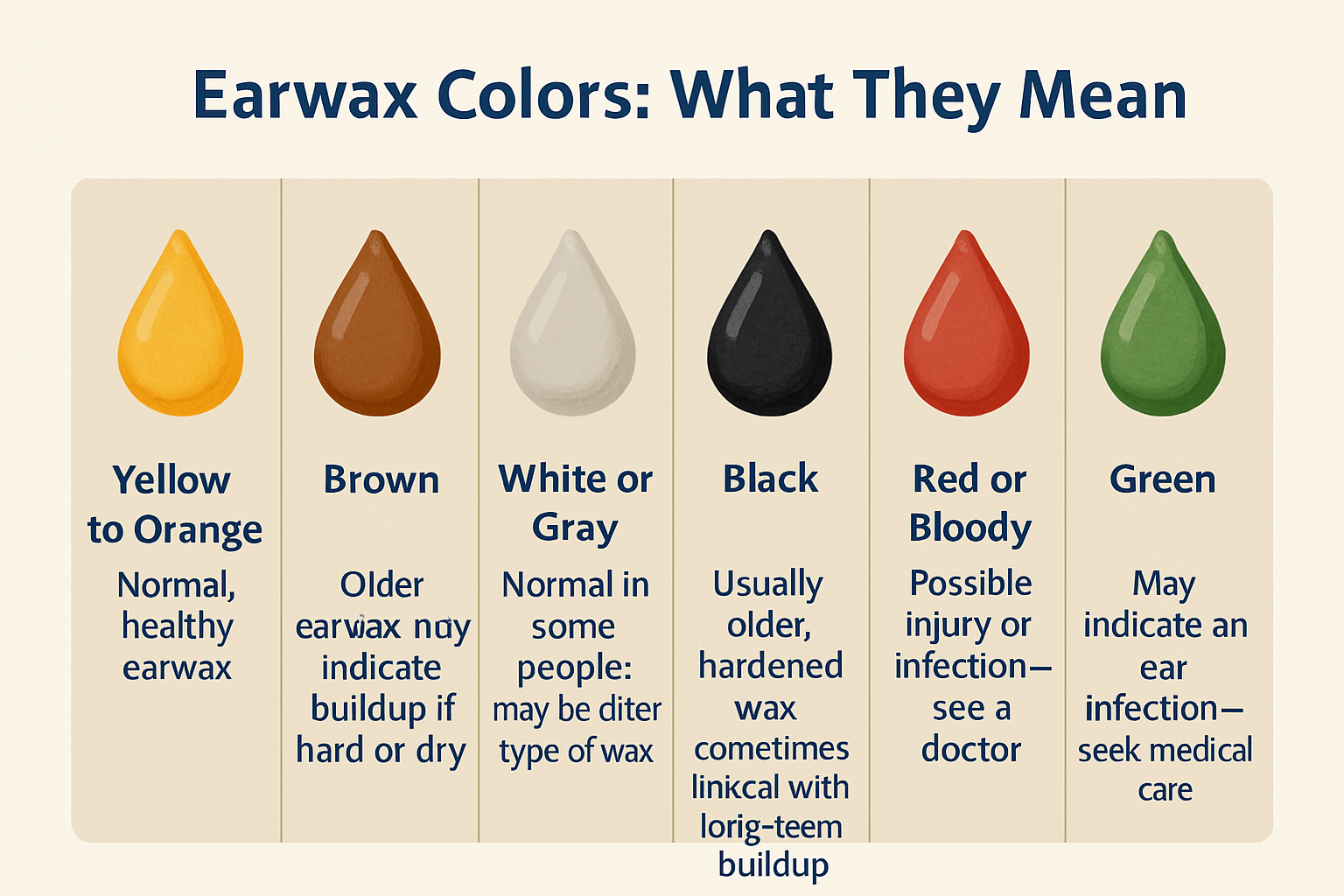A complete guide to understanding earwax: when it’s normal, when it becomes a problem, and how to remove it safely without damaging your ears. Every week in my audiology clinic, I see patients who are worried about earwax. Some can’t hear well, some feel their ears are blocked, and a few even try unsafe cleaning tricks that make things worse. You’re not alone—earwax buildup affects about 10% of children, 20% of adults, and more than 30% of older adults according to research published in the Journal of the American Board of Family Medicine. Earwax, or cerumen, is your body’s natural cleaning system. It traps dust, debris, and bacteria while keeping the ear canal moisturized. Most of the time, earwax slowly works its way out on its own—but sometimes it builds up and causes problems. Common signs that earwax is causing an issue include: Audiologist’s Tip: If you experience sudden hearing loss, severe ear pain, or fluid drainage, don’t try to fix it at home—see a professional right away. Some people naturally make more earwax, but other factors can increase the risk of buildup: Learn more about safe ear cleaning and why cotton swabs should be avoided. Most earwax clears naturally, but if you’re having symptoms, here are the safest removal methods: Audiologist’s Tip: Ear candling is not safe or effective. It can burn the ear canal and leave dangerous residue. Earwax comes in different colors and textures. Most are normal, but some may signal a problem: Yes, earwax buildup can sometimes lead to: Do you think you might have a blockage? Check your symptoms below: If you checked several boxes, you may have an earwax blockage. Start with safe over-the-counter drops, but see an audiologist if symptoms don’t improve. If you experience repeated blockages, unusual discharge, or persistent pain, it’s best to schedule a professional ear cleaning. Audiologists use magnification and specialized tools to safely remove wax without damaging the ear canal or eardrum.Why Earwax Matters
Symptoms of Earwax Buildup
Causes of Earwax Blockage
Safe Earwax Removal Options
Method How It Works Pros Cons Softening Drops Drops like Debrox or olive oil soften earwax so it exits naturally. Easy, inexpensive, safe May take several days to work Gentle Irrigation Controlled rinsing with warm water using an ear irrigation kit. Effective for many people Not safe for those with ear surgery, tubes, or infections Professional Removal An audiologist uses suction, tools, or a microscope to safely remove wax. Immediate results, safest method Requires an office visit What Earwax Colors Mean
Earwax Color What It Means Yellow to Orange Normal, healthy wax Brown Older wax; may be hard or sticky White or Gray Normal for some people; usually drier type Black Older, hardened wax; may indicate long-term buildup Red or Bloody Possible injury or infection — see a doctor Green May signal infection — seek medical care Can Earwax Cause Other Problems?
Earwax Buildup Quiz
When to See an Audiologist
Earwax Buildup: Symptoms, Causes & Safe Removal

